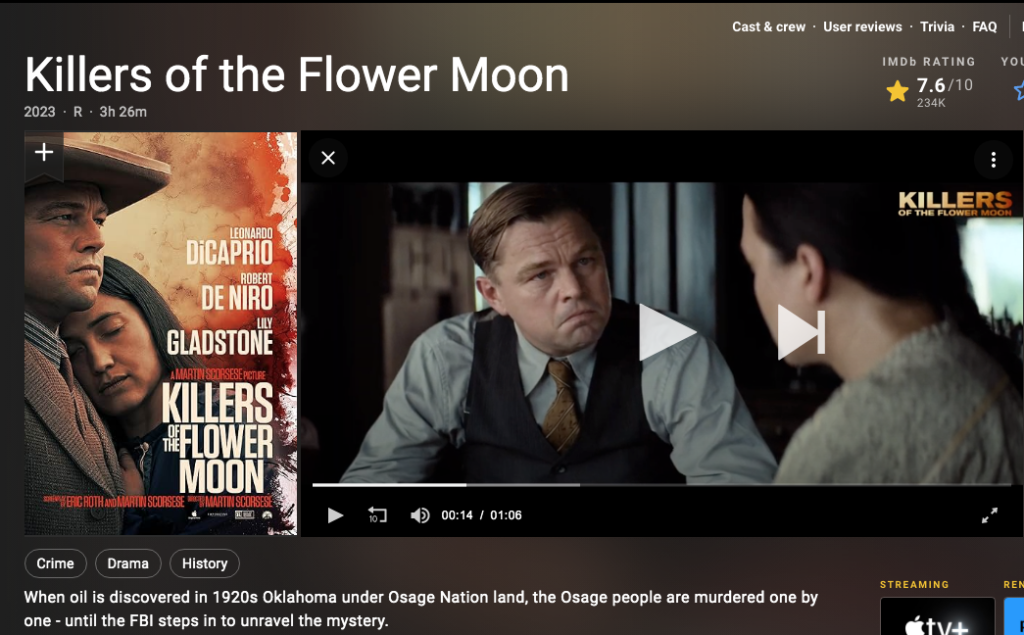“Killers of the Flower Moon,” directed by Martin Scorsese, is a film based off of the non-fiction book of the same name by David Grann. The movie chronicles a dark and gripping chapter in American history.
This film focuses on the series of murders in the Osage Nation during the 1920s, an era when the Osage people became immensely wealthy due to oil deposits beneath their land in Oklahoma. This wealth, however, marked them for exploitation and triggered a string of brutal murders known as the Reign of Terror. The investigation of these murders eventually contributed to the development of the modern FBI.
The film’s narrative is both a true crime tale and a saddening exploration of racism, greed and the exploitation of Native American peoples. Scorsese navigates these themes with the precision of a seasoned storyteller, balancing the grim realities of the murders with a portrayal of the Osage community’s resilience and dignity.
At the heart of the film are the performances. Leonardo DiCaprio delivers a riveting portrayal as Ernest Burkhart, a conflicted figure caught between loyalty to his family and the pursuit of justice. Opposite him, Robert De Niro shines as William Hale, Ernest’s uncle. He is a menacing presence whose insatiable greed knows no bounds. Their on-screen chemistry is intense. Their interactions, filled with power dynamics and simmering resentment, reveal the social dynamics of the time and place.
Supporting performances from the likes of Jesse Plemons, Lily Gladstone and others further enrich the assortment of characters, each adding depth and complexity to the story. The impact of the performances lies not only in their entertainment value but in the capacity to enlighten and provoke thought regarding the historical and ongoing challenges faced by Native American communities.
Cinematographically, “Killers of the Flower Moon” is a visual masterpiece, with Scorsese’s signature attention to period detail. The landscapes of Oklahoma and the period costumes contribute to an immersive 1920s setting, enveloping the viewer in the era’s mood and tension. It is a triumph of storytelling and filmmaking. With its stellar performances, breathtaking visuals and thought-provoking themes, it is destined to leave a lasting impact on audiences and critics alike, solidifying its place as a modern classic of American cinema.
Olivia Hennis
